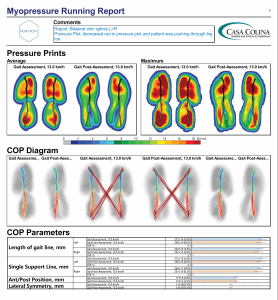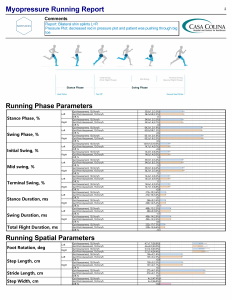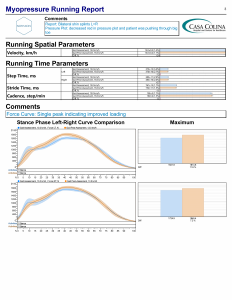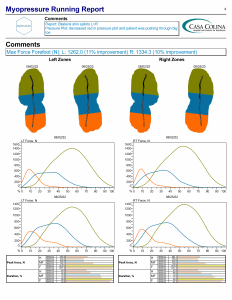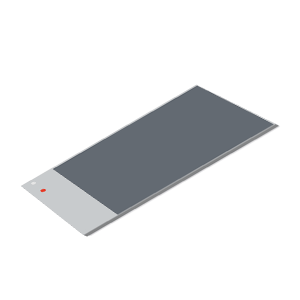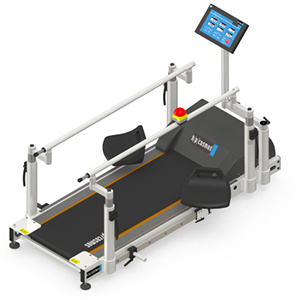Subject’s age: 16
Subject’s gender: Male
Reason for visit: Basketball player with recurrent shin splints
Hardware used: Pressure plate and zebris Treadmill
Treatment summary: One month of glute activation, DL and SL ballistics, and running retraining to improve shock absorption.
Key Improvements Shown in Comparison Report: In the initial assessment, the individual experiences a running speed of 13.0 km/hr during treadmill exercise. However, they report a moderate pain level of 4-5 out of 10 in both shins. A pressure plot analysis reveals high pressure indicated by the red color across the entire foot. The force exerted through the forefoot is significant, with the left side at 232% of body weight and the right side at 246%. The force curve shows a double peak pattern for both sides. Additionally, the maximum force exerted by the forefoot is measured at 1410.5 N on the left side and 1483.4 N on the right side. As a result of the bilateral shin pain, the individual is currently unable to participate in basketball activities.
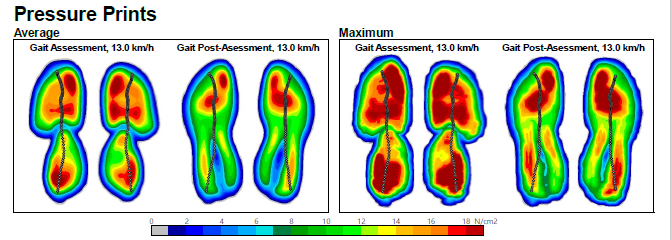
Following treatment, the patient experienced a noticeable decrease in pain levels. Initially reporting a pain level of 3-4 out of 10 during running, they quickly felt relief with the pain subsiding to 0 out of 10. Moreover, the patient’s overall function significantly improved. Prior to treatment, they were unable to engage in basketball activities. However, after undergoing the prescribed intervention, the patient was able to fully participate in basketball without any restrictions or experiencing any pain. This outcome demonstrates the positive impact of the treatment on the patient’s pain management and functional abilities.
Key findings:
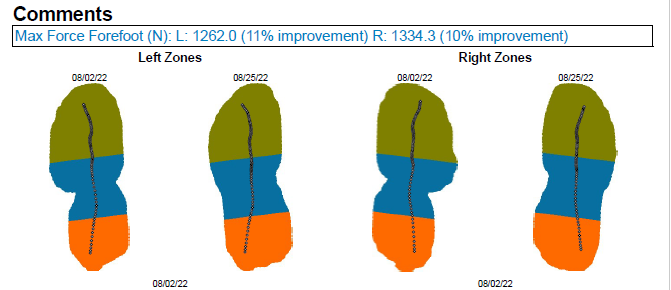
Initial Assessment Findings:
- Treadmill: 13.0 km/hr- 4-5/10 pain in bilateral shins with running
- Pressure Plot: High pressure (red) noted throughout entire foot
- Force through forefoot (% of BW): L: 232% R: 246%
- Force Curve: Double peak for both sides
- Max Force Forefoot (N): L: 1410.5 R: 1483.4
- Currently not playing basketball due to bilateral shin pain
Follow-Up Assessment Findings:
- Treadmill: 13.0 km/hr- 0/10 pain in bilateral shins with running
- Pressure Plot: decreased red in pressure plot and patient was pushing through big toe
- Force through forefoot (% of BW): L: 217% (15% improvement) R: 229% (17% improvement)
- Force Curve: Single peak indicating improved loading
- Max Force Forefoot (N): L: 1262.0 (11% improvement) R: 1334.3 (10% improvement)
- Patient able to return to basketball without limitation and no pain
Assessment & Training Outcomes: The patient experienced a notable decrease in pain levels following the treatment. Initially reporting a pain level of 3-4 out of 10 while running, they quickly felt relief with the pain subsiding to 0 out of 10. Additionally, the treatment had a positive impact on the patient’s overall function. Prior to receiving treatment, the patient was unable to engage in basketball due to their condition. However, after undergoing the prescribed intervention, the patient’s function improved significantly. They were able to play basketball to their full capacity, without any restrictions, and most importantly, without experiencing any pain. This outcome demonstrates the effectiveness of the treatment in alleviating the patient’s pain and restoring their ability to participate in physical activities.


